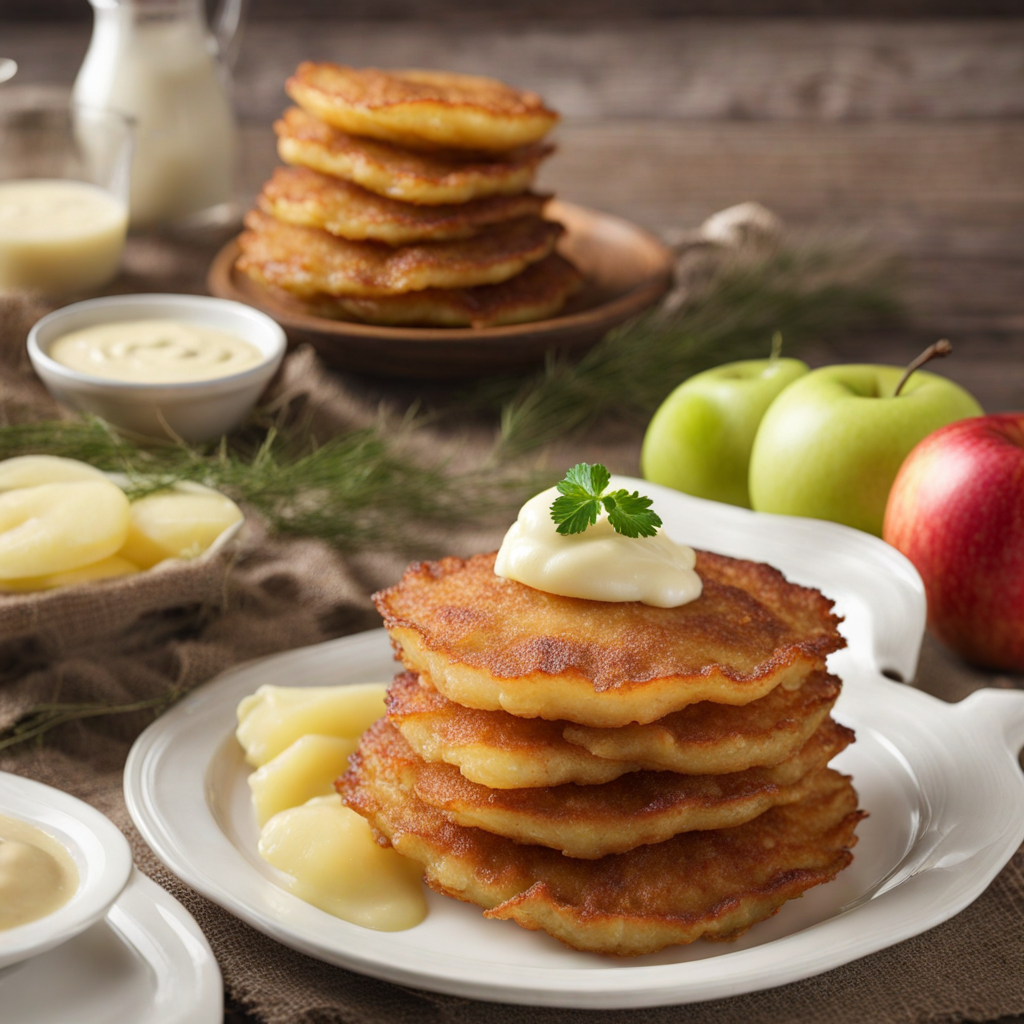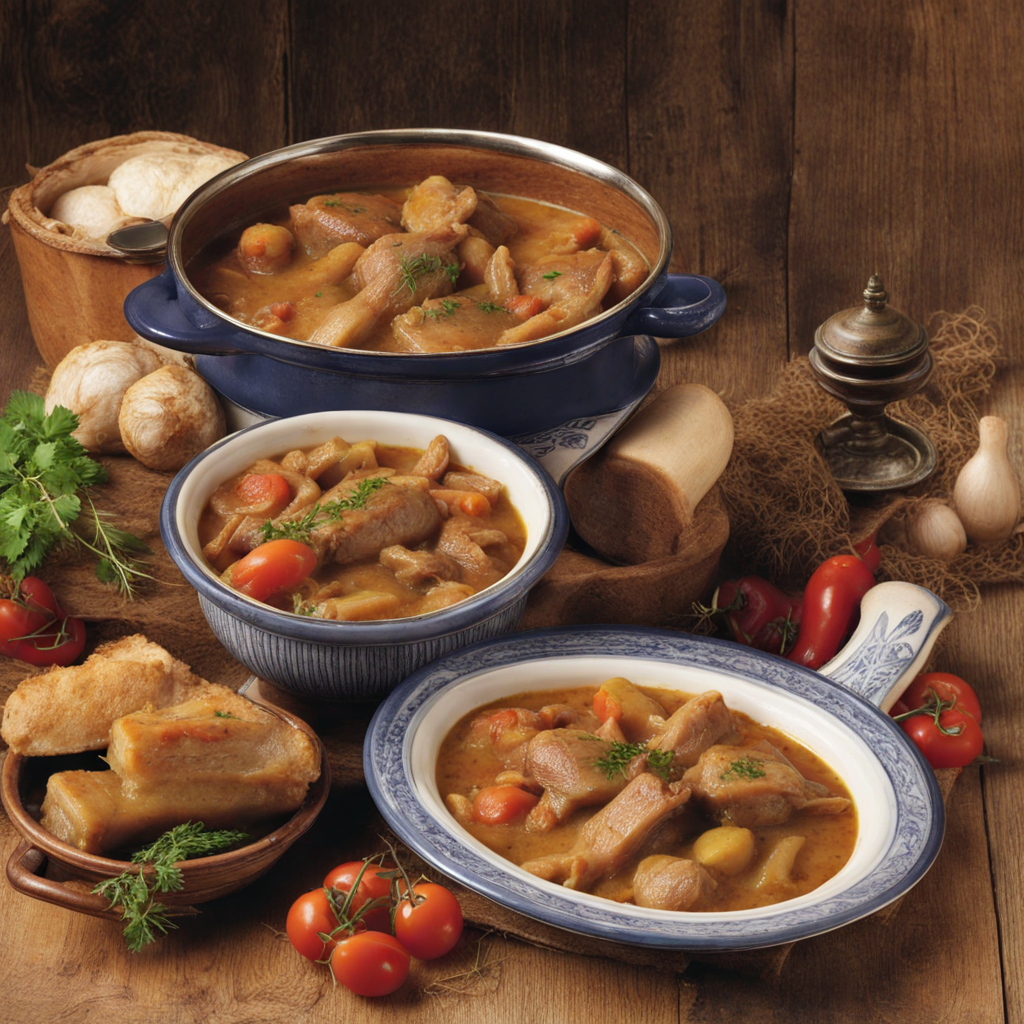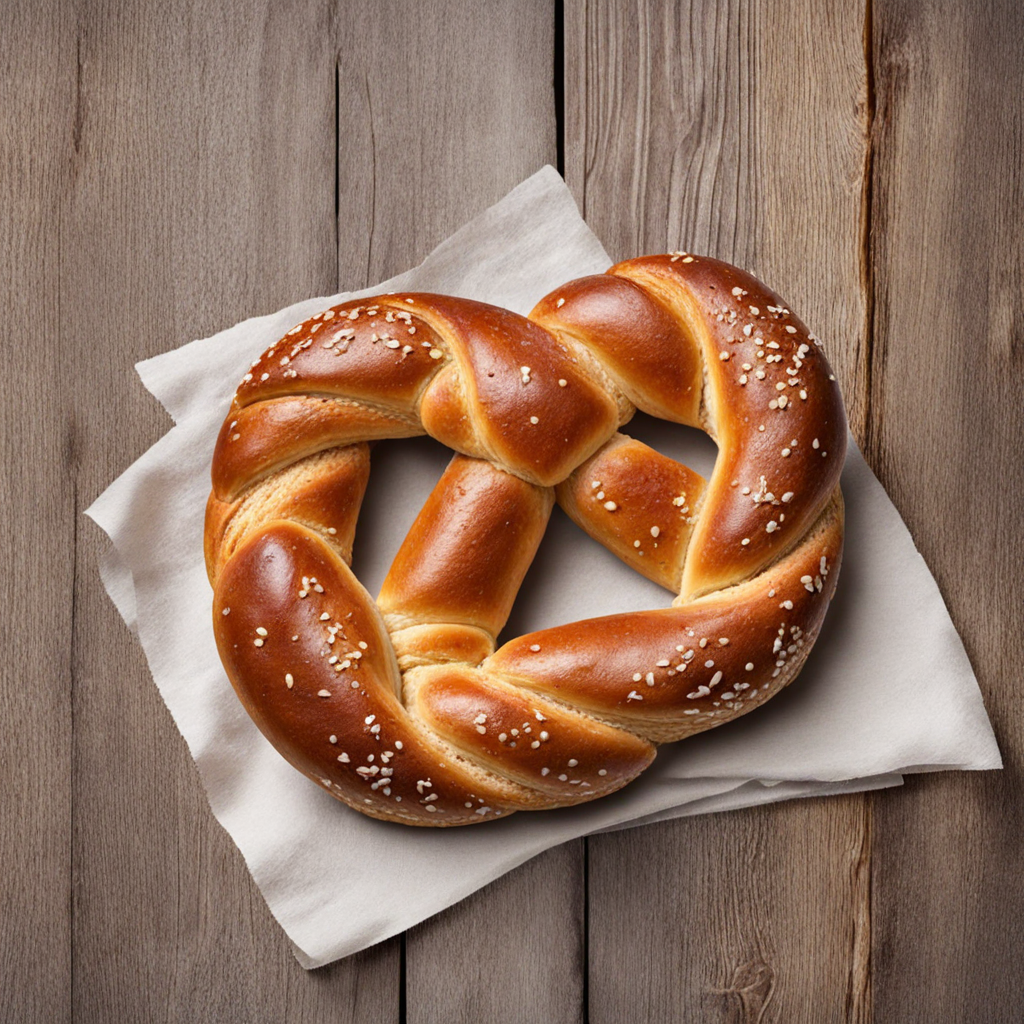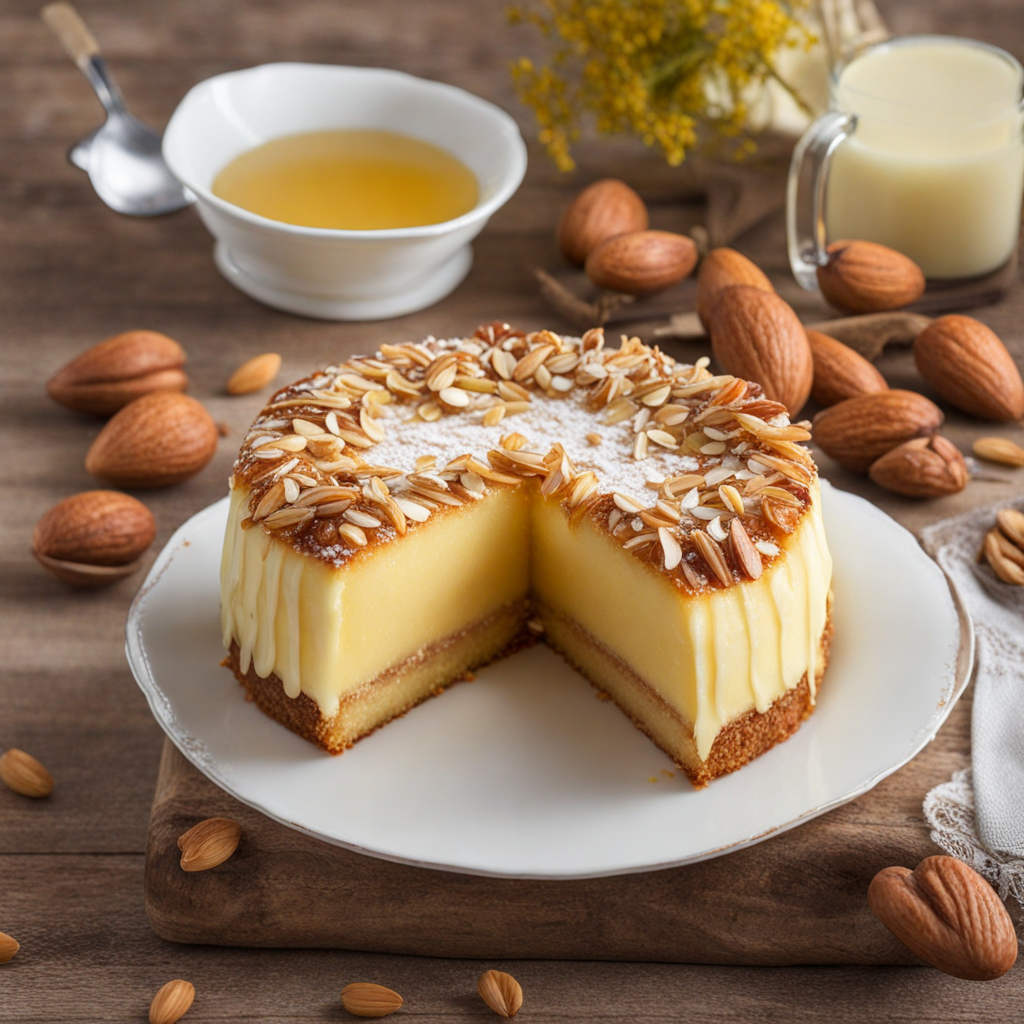Kartoffelpuffer
Kartoffelpuffer, also known as potato pancakes, are a beloved traditional dish in Germany that showcases the humble potato in a delightful way. These crispy, golden-brown fritters are made primarily from grated potatoes, which are mixed with a hint of onion, egg, and flour to bind the ingredients together. The mixture is then shaped into small pancakes and pan-fried until they achieve a perfect balance of a crunchy exterior and a tender, fluffy interior. The simple yet satisfying preparation results in a dish that is both rustic and comforting, perfect for any occasion. The flavor profile of Kartoffelpuffer is wonderfully versatile. Each bite delivers a satisfying crunch followed by the subtle sweetness of the potatoes, enhanced by the aromatic notes of sautéed onions. While they can be enjoyed plain, Kartoffelpuffer are often served with a variety of accompaniments that elevate their taste. A dollop of applesauce adds a sweet and fruity contrast, while sour cream offers a creamy richness that complements the savory aspect of the pancakes. Some people even enjoy them with smoked salmon or caviar for a more luxurious twist. This dish is not only a staple at festive events like Christmas markets, where they are freshly prepared and served hot, but also a comforting meal enjoyed at home. Kartoffelpuffer evoke a sense of nostalgia and warmth, reminding many of family gatherings and celebrations. Whether served as a side dish, appetizer, or even a main course, they provide a delightful way to savor the essence of German cuisine and experience the rich culinary traditions that come with it.
How It Became This Dish
The History of Kartoffelpuffer: A Delicious German Delight Origins: The Humble Beginnings The Kartoffelpuffer, also known as potato pancake or Reibekuchen, is a beloved dish that has woven itself into the cultural fabric of Germany. Its origins can be traced back to the 19th century, coinciding with the widespread adoption of the potato in European cuisine. The potato, native to South America, was introduced to Europe in the late 16th century and quickly gained popularity, especially in areas where the climate was suitable for its cultivation. By the 18th century, it became a staple food, particularly in Germany, where it was embraced by both the peasantry and the burgeoning middle class. The earliest forms of Kartoffelpuffer were likely simple creations made from grated potatoes mixed with minimal ingredients, such as salt and water, and fried in fat. This method of preparation was not just economical but also practical, as it allowed the use of leftover potatoes and was a way to make a hearty meal. As the dish developed, regional variations emerged, reflecting local tastes and available ingredients. Cultural Significance: A Symbol of German Identity As Kartoffelpuffer gained popularity, it became more than just a simple dish; it evolved into a symbol of German culinary identity. The dish is particularly associated with the Rhineland region, where it is commonly served at festive occasions and Christmas markets. The smell of frying potatoes wafting through the air during the holiday season is a cherished olfactory memory for many Germans, evoking feelings of nostalgia and comfort. Kartoffelpuffer is often enjoyed with applesauce or sour cream, enhancing its flavor and showcasing the German affinity for blending sweet and savory elements in their cuisine. The dish’s presentation and accompaniments can vary by region, reflecting the diversity of German food culture. In some areas, it might be served with smoked salmon or caviar, while in others, it is simply paired with a dollop of homemade applesauce. The cultural significance of Kartoffelpuffer extends beyond personal enjoyment; it is also tied to German traditions and celebrations. During the Jewish festival of Hanukkah, for instance, potato pancakes known as latkes are served, a custom that has roots in Eastern European Jewish cuisine. This shared appreciation for potato pancakes illustrates the interconnectedness of various culinary traditions and highlights how Kartoffelpuffer has transcended cultural boundaries. Development Over Time: From Simple Fare to Gourmet Delight The industrial revolution of the 19th century brought about significant changes in food production and consumption patterns in Germany. As urbanization increased, so did the demand for quick and affordable meals. Kartoffelpuffer, with its simple ingredients and ease of preparation, became a popular street food, particularly in cities like Cologne and Düsseldorf. Street vendors would set up stalls at fairs and markets, serving freshly fried potato pancakes to eager customers, solidifying the dish’s place in popular culture. In the 20th century, Kartoffelpuffer underwent a transformation as culinary techniques and tastes evolved. The post-World War II period saw a renewed interest in traditional German dishes, as people sought comfort in the familiar flavors of their childhood. Kartoffelpuffer found its way back into homes and restaurants, often featured on menus as a nostalgic reminder of simpler times. The rise of gourmet cuisine in the late 20th and early 21st centuries brought about a renaissance for Kartoffelpuffer. Chefs began to experiment with the dish, elevating it beyond its rustic roots. Variations emerged that incorporated different types of potatoes, additional ingredients such as herbs and spices, or even exotic toppings. The dish became a canvas for culinary creativity, allowing chefs to reimagine Kartoffelpuffer in contemporary settings while still honoring its traditional essence. Regional Variations and Modern Adaptations With Germany’s rich tapestry of regional cuisines, Kartoffelpuffer has inspired countless adaptations across the country. In Bavaria, for instance, one might find a version that incorporates onions, adding a savory depth to the flavor profile. Meanwhile, in the northern regions, Kartoffelpuffer may be paired with herring, reflecting the local love for seafood. The dish has also found new life internationally, thanks to the globalization of cuisine. In many cultures, similar potato-based pancakes exist, such as the latkes of Jewish tradition or the Korean jeon. These dishes often share a common history, rooted in the humble potato and the necessity of making the most out of available ingredients. In recent years, the health-conscious movement has prompted chefs and home cooks to explore alternative methods of preparation. Baked Kartoffelpuffer or versions made with sweet potatoes and other vegetables are gaining popularity, catering to those seeking lighter or gluten-free options. Plant-based diets have also influenced the way Kartoffelpuffer is prepared, with vegan versions replacing eggs and dairy with alternatives. Conclusion: The Enduring Allure of Kartoffelpuffer Through centuries of evolution, Kartoffelpuffer has maintained its status as a cherished dish within German cuisine. From its humble beginnings as a peasant food to its place on the menu of gourmet restaurants, it reflects the adaptability of culinary traditions and the enduring appeal of simple, flavorful ingredients. As Germans continue to celebrate their culinary heritage, Kartoffelpuffer stands as a testament to the power of food to evoke memories, foster community, and bridge cultural divides. Whether enjoyed at a bustling Christmas market, a family gathering, or a trendy restaurant, Kartoffelpuffer remains a delicious reminder of the rich history and shared experiences that unite us all through the love of food.
You may like
Discover local flavors from Germany






